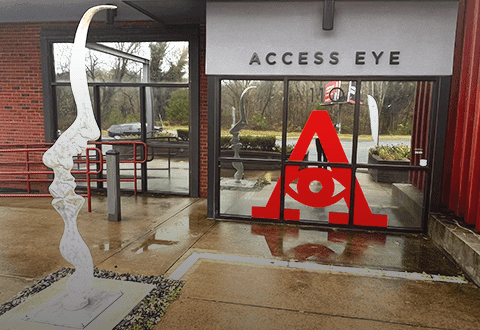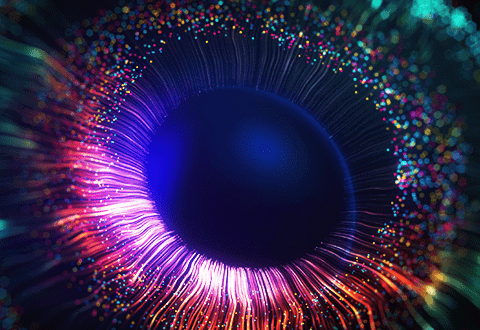Retina Disease Specialist in Fredericksburg, VA
Retina Specialist Also Serving Spotsylvania, Stafford & King George Patients
The retina is a thin layer of nervous tissue that lines the inside of the eyeball. Images are formed on this layer (not unlike images formed on a movie screen) and converted to electric signals within individual nerve cells. These nerve cells are eventually bundled up as the optic nerves, which in turn, travel to the brain. The space within the eyeball is filled with a jelly like substance, called the “vitreous.”
Diseases within this area of the eye are numerous and varied and even a cursory discussion is beyond the scope of this writing, but it helps to review some common problems. Many such diseases start primarily within the vitreous/retina. In addition, diseases affecting the body in general such as diabetes and high blood pressure can have an impact on the retina/vitreous.

Floaters and Flashes
A common concern for which we routinely see many patients at Access Eye is the onset of floaters and sometimes flashes of light. Any object within the vitreous cavity that moves can cast a shadow on the retina, which is construed as a “floater.” Depending on the size of the object and the distance from the retina, floaters can have vastly different presentations. The accompanying flashes of light are often an indication that the vitreous jelly is tugging on the retina. It is of paramount importance that each case of floaters or light flashes be evaluated at its onset to rule out, for example, a tear in the Retina that can lead to a Retinal Detachment if untreated, or alternatively, a hemorrhage within the vitreous cavity that can have other causes.
IMPROVING LIVES
THROUGH BETTER VISION
Diabetic Retinopathy
Exams to detect diabetic vision damage is another very common reason patients seek treatment at Access Eye. Diabetes can have a profound effect on blood vessels in general, and in specific, on blood vessels of the retina. This effect on the blood vessel can cause a variety of problems of the vitreous/retina, which are collectively called “Diabetic Retinopathy.” Examples include leakage of fluid within the retina or even formation of new disorganized small vessels prone to hemorrhage. Unfortunately, many patients are unaware of these problems until significant damage has already occurred. It is therefore important that each diabetic patient has a retinal examination at least annually and more often as indicated by the presence of disease in the eye.
Macular Degeneration
The central part of the Retina is called the “macula.” If one looks directly at an object, then the image from the object is centered on the macula part of the retina. The macula is responsible for our fine, detailed vision straight in front of us. This is in contrast to our peripheral vision, which encompasses a much larger area on each side but lacks detail. Macular Degeneration is unfortunately a common, degenerative disease affecting this crucial area of central vision in many seniors who come for their care to Access Eye. The disease has a “dry” and a “wet” type having to do with whether there is leakage of fluid from the aberrant growth of blood vessels in the retina. Although still a formidable disease and a serious public health concern, many advances have been made in the diagnosis and treatment of this disease within the past two decades.

King George Office
7961 Kings Highway
King George, VA 22485
Phone: (540) 371-2020
Office Hours
Ophthalmology in King George, VA Hours
Mondays – 8:00am to 5:00pm
Tuesdays – 8:00am to 5:00pm
Wednesdays – 8:00am to 5:00pm
Thursdays – 8:00am to 5:00pm
Fridays – 8:00am to 5:00pm
Closed for lunch from 1:00pm to 2:00pm
Falmouth Office
110 Cambridge Street
Fredericksburg, VA 22405
(540) 371-2020
Office Hours
Ophthalmology in Falmouth, VA Hours
Monday – 8:00am to 5:00pm
Tuesday – 8:00am to 5:00pm
Wednesday – 8:00am to 5:00pm
Thursday – 8:00am to 5:00pm
Friday – 8:00am to 5:00pm
Route 3 Office
4516 Plank Road
Fredericksburg, VA 22407
(540) 371-2020
Office Hours
Ophthalmology in Fredericksburg, VA Hours
Monday – 8:00am to 5:00pm
Tuesday – 8:00am to 5:00pm
Wednesday – 8:00am to 5:00pm
Thursday – 8:00am to 5:00pm
Friday – 8:00am to 5:00pm
Parkway Office
4701 Spotsylvania Parkway
Suite 110
Fredericksburg, VA 22408
Office Hours
Ophthalmology in Spotsylvania, VA Hours
Mondays – 8:00am to 5:00pm
Tuesdays – 8:00am to 5:00pm
Wednesdays – 8:00am to 5:00pm
Thursdays – 8:00am to 5:00pm
Fridays – Temporarily Closed
Closed for lunch 1:00pm -2:00pm
Dedicated Laser Center
4516 Plank Rd
Fredericksburg, VA 22407
(540) 371-2020
Office Hours
Dedicated Laser Center Hours
Refer to hours listed for the Plank Road Location
Aquia Office
2761 Richmond Highway
Suite 205
Stafford VA, 22554
Office Hours
Ophthalmology in Stafford, VA Hours
Mondays – 8:00am to 5:00pm
Tuesdays – 8:00am to 5:00pm
Wednesdays – 8:00am to 5:00pm
Thursdays – 8:00am to 5:00pm
Fridays – 8:00am to 5:00pm
Closed for lunch 1:00pm -2:00pm


















